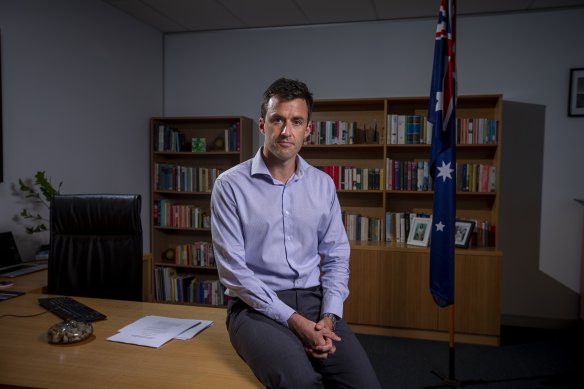Students snubbing school zones amid calls to scrap outdated model

Save articles for later
Add articles to your saved list and come back to them any time.
Almost half of Victoria’s public students attended a government school outside their allocated catchment zone last year, raising questions about the relevance of the enrolment model.
Data released to The Age under freedom of information laws shows 41 per cent of government school students attended a mainstream public school other than their local neighbourhood campus in 2022.
The government moved to crack down on school zones this year, imposing enrolment restrictions on more than 100 of Melbourne’s most sought-after state schools and geographically smaller “non-standard zones” on 17 schools in a bid to discourage “school shopping”.
But the figures have opened a new debate on the ongoing importance of the zones – originally established to guarantee children a place in their local school.
Opposition education spokesman Matthew Bach backs the abolition of school zones, saying their removal would allow parents to choose schools better aligned with their children’s talents and family needs.
It would also increase competition among public schools, he said, leading to a model closer to independent education where underperforming campuses were forced to improve to retain students.
“We’re already seeing many parents apply to have their children educated out of zone,” he said. “So there’s a market there that’s trying to work right now. But the state government’s rules are making it impossible.”
Bach, a former school teacher who plans to enrol his eldest daughter in her locally zoned state school next year, said catchment restrictions punished high-performing schools and distorted housing markets as desperate parents fought to buy into coveted zones.
He said rather than restricting enrolments, the government should invest resources in improving struggling schools to make them more attractive to local families.
“It certainly looks like what the government has done is to see these [enrolment] figures, see that parents want more choice when it comes to a state education but then immediately put in rules to try to stymie that choice.”
Opposition education spokesman Matthew Bach, a former principal, backs the abolition of school zones.Credit: Wayne Taylor
School zones assist the government with planning, allowing allocation of resources based on population predictions.
The new Education Department data used students’ residential addresses at February 2022 and excluded students attending specialist or select-entry schools.
The numbers for out-of-zone enrolments were lower at entry-level grades, with 38 per cent of preps and 33 per cent of year 7s enrolled outside their local schools. There was no comparative data available for other years.
Mount Waverley resident Catherine Fung toured her local school but decided to enrol her son Shane for prep outside her catchment at Murrumbeena Primary School.
Fung said while her local primary ranked well academically, Murrumbeena’s ethnic diversity, kitchen garden and International Baccalaureate program made it more appealing. Her son also had childcare friends starting at the same school.
Fung said the family had moved from Los Angeles last year and a 15-minute drive to a neighbouring catchment was “no big deal”.
Shane’s sister Kaylee will also attend Murrumbeena when she starts school in a few years. Fung said the family was watching their locally zoned high school to see how it developed.
“Both my husband and I are public school kids, so it’s a bit of a culture shock with how many private schools there are here,” she said. “For us, it’s hard to justify the costs when we feel uni is more important than high school in this day and age.”
The Department of Education reviews school zones annually. Zones may be adjusted to reflect new schools opening; changing provision at existing schools; improving accessibility; or managing enrolment demand.
Education Minister Natalie Hutchins said students could enrol at a school outside their zone if the school had sufficient space and it aligned with its enrolment management plan.
“The Victorian government has invested more than $30 billion in school programs and infrastructure to ensure every school is a great local school,” she said.
Get the day’s breaking news, entertainment ideas and a long read to enjoy. Sign up to receive our Evening Edition newsletter here.
Most Viewed in National
From our partners
Source: Read Full Article
